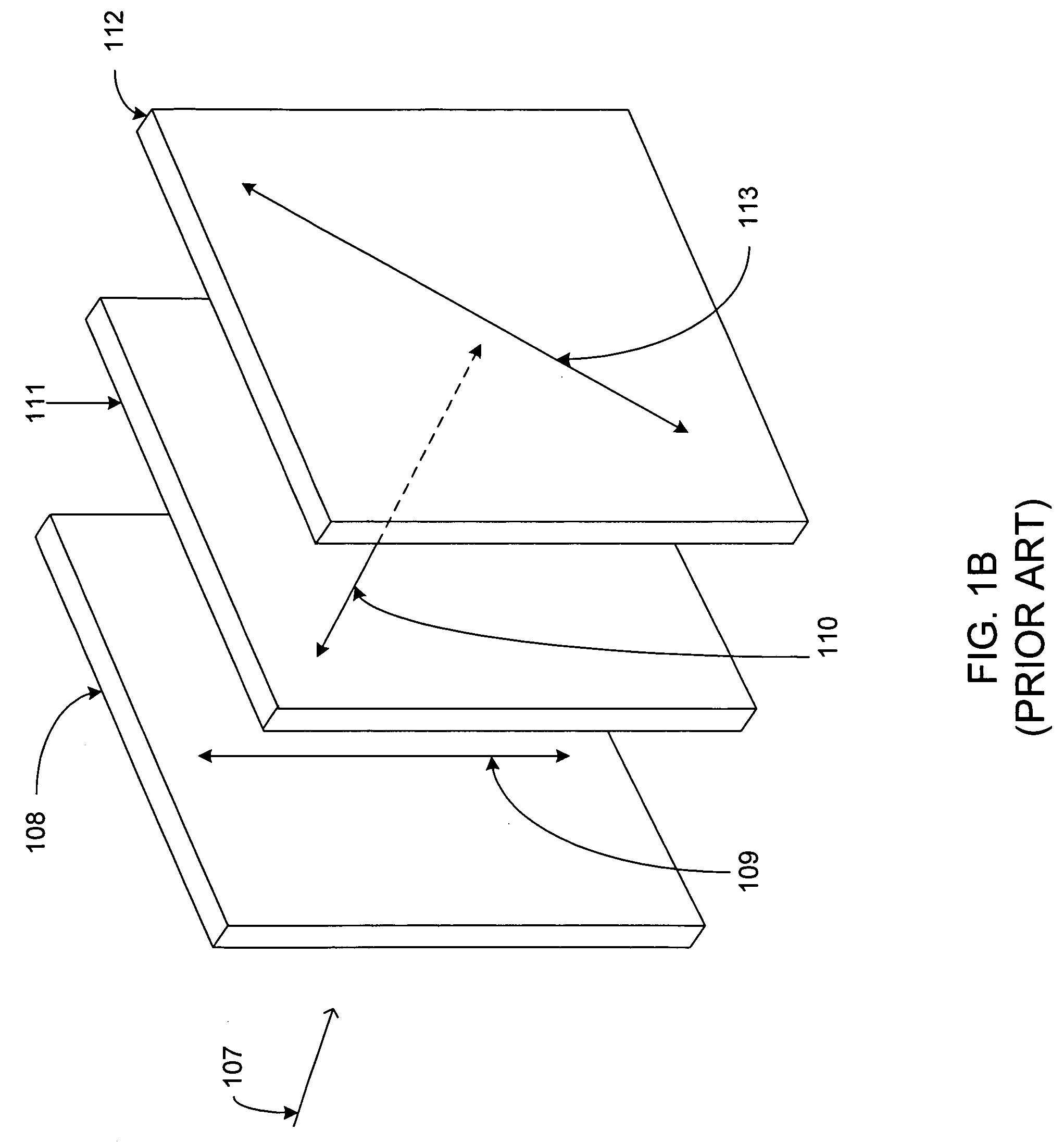Combining P and S rays for bright stereoscopic projection
a stereoscopic projection and combining rays technology, applied in non-linear optics, instruments, optical elements, etc., can solve the problems of holding back heat polarizers, unable to provide useful illumination, and light loss problems associated with absorption polarizers
- Summary
- Abstract
- Description
- Claims
- Application Information
AI Technical Summary
Problems solved by technology
Method used
Image
Examples
Embodiment Construction
[0027]The present design seeks to increase overall brightness in a projected stereoscopic image using polarization for image selection. The system creates a dual path arrangement that can greatly increase the brightness of the image perceived by the viewer—in essence almost doubling the amount of light energy projected on the screen.
[0028]A previous stereoscopic projection system is described in FIG. 1A. The design of FIG. 1A uses a single projector having imaging surface 101 and lens 102. Mounted in front of the projection lens 102 is a ZScreen as manufactured and sold for more than a decade by StereoGraphics Corp. The ZScreen polarization modulator has been described in great detail in Lipton U.S. Pat. No. 4,792,850, which is hereby incorporated by reference. The image is produced using the field-sequential or time-multiplex format for the viewing of stereoscopic computer generated and camera produced images and is well known and understood. Observer 106 wearing polarizing image s...
PUM
 Login to View More
Login to View More Abstract
Description
Claims
Application Information
 Login to View More
Login to View More - R&D
- Intellectual Property
- Life Sciences
- Materials
- Tech Scout
- Unparalleled Data Quality
- Higher Quality Content
- 60% Fewer Hallucinations
Browse by: Latest US Patents, China's latest patents, Technical Efficacy Thesaurus, Application Domain, Technology Topic, Popular Technical Reports.
© 2025 PatSnap. All rights reserved.Legal|Privacy policy|Modern Slavery Act Transparency Statement|Sitemap|About US| Contact US: help@patsnap.com



